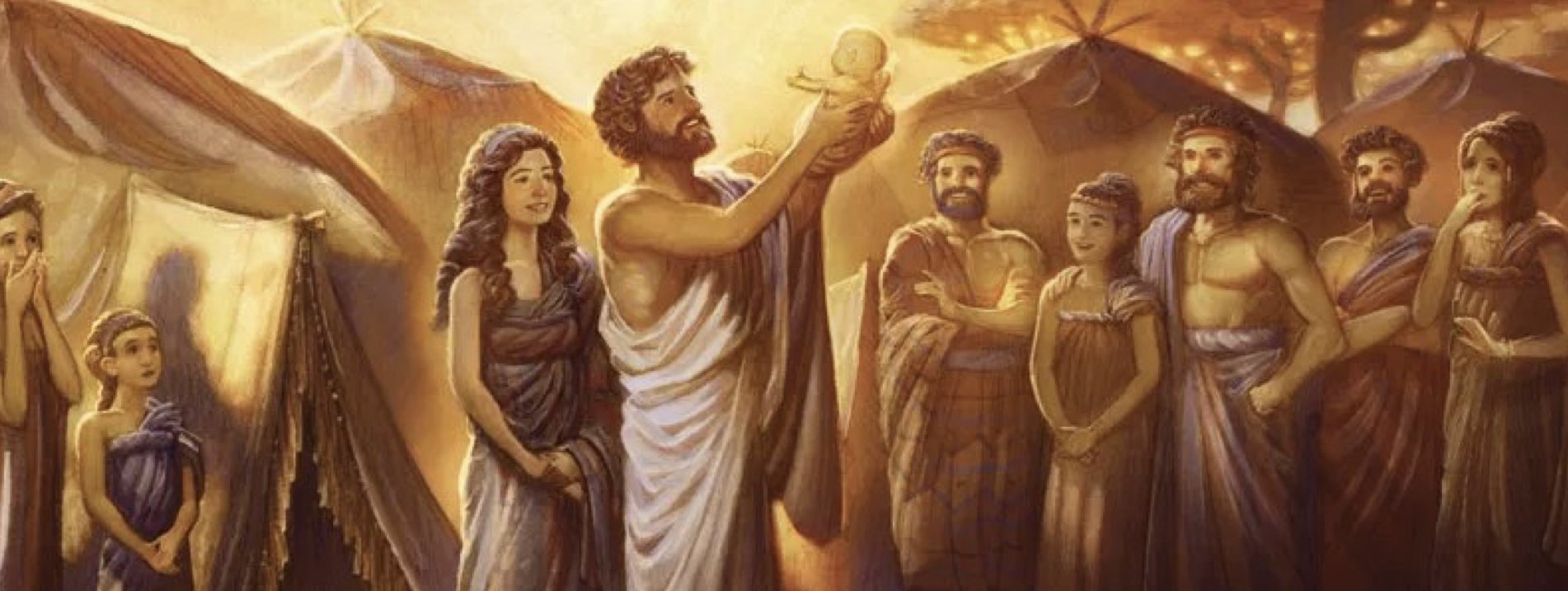The Church Before Father Abraham
When did the church have its first beginning?
If one is a beginning student of covenant theology, he may answer that it began with Abraham. After all, the Apostle Paul calls the promises first made to Abraham “the gospel” (Gal. 3:8), and that patriarch of Genesis is referred to as “the father of us all” (Rom. 4:16), meaning our father in faith. As much as this answer is an improvement upon the modern forms of Evangelical Christianity that radically separate the Old and New Testaments, the reality is that there is more to it.
There is a line of the godly spoken of both in the Genesis account (Gen. 4:24-5:32), and in later places of Scripture (Heb. 11:4, 7). Such would not be spoken of in this way without being grafted into Christ and His kingdom. Of the beginning of that line we are told: “At that time people began to call upon the name of the LORD” (Gen. 4:26).
The line of the godly in Chapter 5 transitions to the story of Noah and his sons. The very typology that the Flood (judgment) and the Ark (salvation) represented (cf. 1 Pet. 3:20-21) makes their inclusion in Christ plain. So too does the sacrificial element of the covenant, once the flood subsides, as Noah acts as a priest on behalf of his family on the other side of that judgment (Gen. 8:20-22).
The Salvation of Adam and Eve
That the church begins with Adam may be seen in four hints in Genesis that the first couple believed the gospel promise and one final clue:
First, Adam’s naming of his wife shows that he believed the promise of 3:15—“The man called his wife’s name Eve, because she was the mother of all living” (3:20). In Hebrew, “Eve” (ḥaw-wāh) closely resembles “living” (chay). So, Calvin commented that “when he heard the declaration of God concerning the prolongation of life, he began again to breathe and to take courage.”1
Second, there was God’s action: “the LORD God made for Adam and for his wife garments of skins and clothed them” (3:21). If we compare this to 3:7, the contrast is between their own facade of a covering and God’s true provision. It also suggests that there was a sacrifice, typifying Christ’s work to come (cf. Heb. 9:22).
Third, there was what we might call a severe mercy. Note the words right before the exiling action: “Now, lest he reach out his hand and take also of the tree of life and eat, and live forever …” (3:22). This was not done out of any insecurity on God’s part! Adam was no threat to the heavenly courts. It was clearly a grace protecting Adam and Eve from a damning kind of immortality.
Fourth, Eve’s reaction to the birth of Cain (4:1), which at least looked forward to that offspring (3:15), but then an even more God-glorifying reaction to Seth’s birth (4:25), changing the acting subject from “I have” to “God has.” The mother of all the living proved herself to be the mother of all the spiritually living as well. She went from presumption to utter dependence on God.
Fifth, the account of the godly line circles back to Adam and directly links Seth to him (5:1-3), positioning Seth after Adam’s own image, and Adam, in turn, as God’s. This would be odd if all that was occuring was a reaffirmation of Adam’s old line. Why then not place this before the birth of Cain? One perfectly reasonable answer is that Adam is considered to be the first of the godly line.
Consequently, even though Adam represents the cursed race as their head (Rom. 5:12; 1 Cor. 15:22), nevertheless these five clues are given in Genesis to the effect that he and his wife also found grace.
________
1. John Calvin, Commentaries, I:181.

